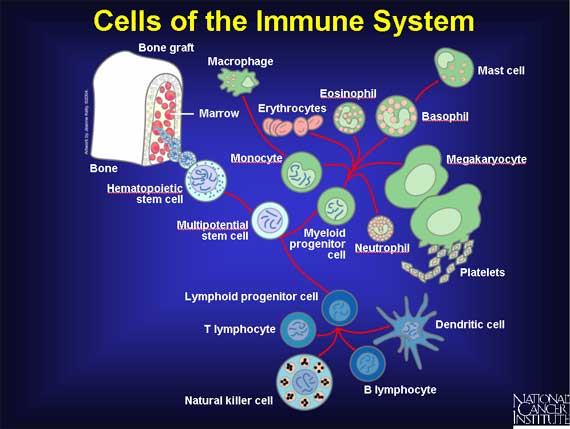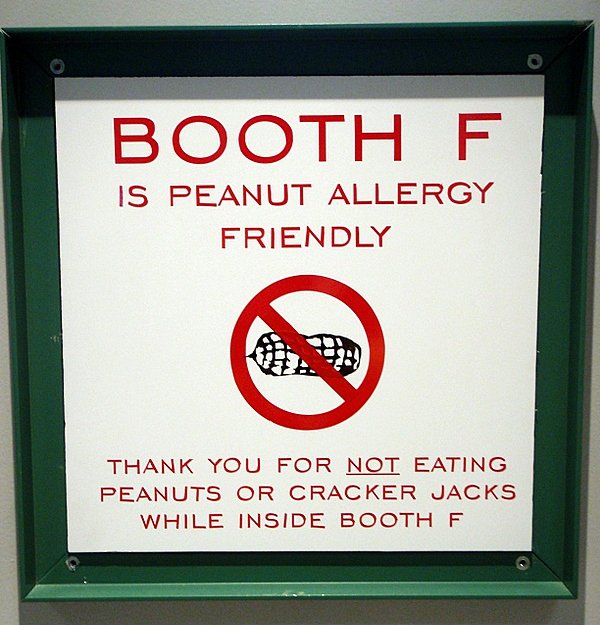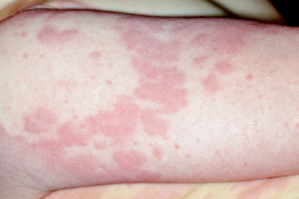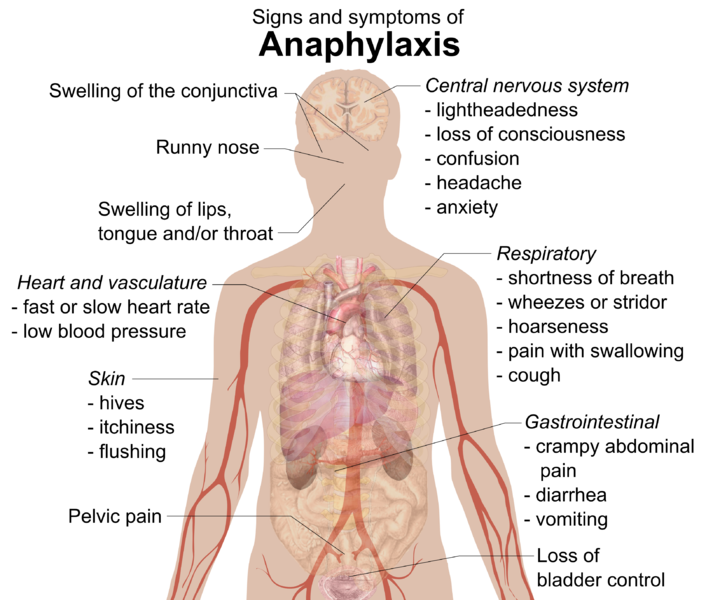Food Allergies
Causes, Symptoms, Treatment, and Side Effects of Food Allergies
Food Allergies Overview
Food allergies are caused when the immune system does not accept a particular food and overreacts to it as soon as it enters your body, identifying it as dangerous sometimes. As your immune system fights off all the dangers in your body, it acts the same to some foods, no matter the quantity. Even a pinch of food can cause food allergy if your immune system considers it a danger.
Some seasonal allergies can also occur during different seasons. But they have other symptoms and processes.
How Do Food Allergies Occur In Your Body?
Food allergies involve two parts of your immune system. One is immunoglobulin E (IgE), a protein type that is known as an antibody that moves through your blood. The other part is mast cells, the cells present in all of your body tissues, but primarily they are in places like your nose, throat, lungs, skin, and digestive tract.
When a particular food enters your body, the body produces many antibodies to fight it off i.e., IgE. The IgE fights the allergen i.e., the allergic food, and then attaches itself to the mast cells. But, the first time the allergen entered your body, it has prepared the body for food allergy. And the next time you intake the same food, the body overreacts to it, and you will witness the symptoms, and hence food allergy has occurred.

Most Common Types of Food Allergies
Although it’s confirmed that people can induce food allergy from any food according to their immune systems. No specifications of food are there. But some foods are scientifically proven and tested for allergies as they are the most common ones that the immune system detects as a danger element.

The top 14 food allergens are:
- Celery;
- Cereals containing gluten;
- Crustaceans;
- Eggs;
- Fish;
- Lupin;
- Milk;
- Molluscs;
- Mustard;
- Tree Nuts;
- Peanuts;
- Sesame seeds;
- Soya
- Sulfur dioxide (sometimes known as sulfites)
According to, World allergy organization, The natural history of food allergy also depends on the specific food sensitization, with children allergic to milk and egg displaying a better prognosis than those allergic to peanuts, tree nuts, and fish.

Symptoms
The symptoms of an allergic reaction vary from people to people and body to body. A particular food may be uncomfortable and not severe for some people. For others, this trigger food reaction may cause frightening and even life-threatening results. Usually, the Food allergy symptoms are visible within a few minutes to two hours after eating the trigger food. In some rare cases, it occurs during 72 hours also.

Most common food allergy symptoms are:
- sneezing, runny or blocked nose
- itchy, red or watery eyes
- wheezing
- chest tightness, shortness of breath and dry cough
- raised red rashes on the skin
- swollen lips, tongue, eyes or face
- tummy pain, feeling sick, dizziness, vomiting or diarrhea
- dry, red and cracked skin

While food allergies can develop at any stage of life, most appear in early childhood or adulthood. But it is also seen that children sometimes outgrow these food allergies or seasonal allergies. Adults can be diagnosed with an allergy at any point, and no one can predict the severity of each reaction. Moreover, people with seasonal allergies or food allergies should be informed of a severe allergic reaction, called anaphylaxis. This condition can be life-threatening for the allergic person and needs to be treated urgently.
Treatment
Referring to an allergist is quite essential to confirm the diagnosis of a doubted food allergy. Patients should prevent the food in the issue until complete examination. Before treatment, diagnostic tests are crucial, which are taken by the allergists. Moreover, The SPT is a rapid, safe, and susceptible method for diagnosing suspected IgE-mediated food allergy.
An oral food challenge is also applied if the results of the SPT are not precise. In this method, the allergic person is given the trigger food gradually with complete medical assistance.
Other strategies to treat food allergies also include an elimination diet and food/symptom diaries. The elimination diet method can be adopted for both the diagnosis and treatment of different food allergies. During this treatment, the allergic person has to avoid altogether the trigger food, the related food group, and foods with even a minor of allergens.
For instance, presently, there is no treatment for food allergy, beyond the avoidance of the suspected food and food groups that is the elimination diet method. If any incidental exposure to the trigger food comes up, the treatment available is epinephrine administered by intramuscular injection into the lateral thigh. It comes in two dosages and is given according to the weight of the allergic person.

Conclusion
Food allergies can appear at any age in your life , and proper treatment of the food allergy doesn’t exist now. That means avoiding the offending food is the only way. The initial symptoms should be taken seriously, and medical assistance should be consulted immediately to prevent any future complications.
Written by: Madiha Ather Hashmi (April 24, 2020)
Sources
- Hugh A. Sampson (2004). “Update on food allergy”. National Center for Biotechnology Information.
https://www.ncbi.nlm.nih.gov/pubmed/15131561?dopt=Abstract - NHS (2018). “Symptoms”. Crown.
https://www.nhs.uk/conditions/allergies/symptoms - Alessandro Fiocchi, MD and Vincenzo Fierro, MD (2017). “Food Allergy”. World Allergy Organization.
https://www.worldallergy.org/education-and-programs/education/allergic-disease-resource-center/professionals/food-allergy - Waserman, S., Watson, W. Food allergy. “All Asth Clin Immun 7, S7 (2011)“. https://doi.org/10.1186/1710-1492-7-S1-S7.
https://aacijournal.biomedcentral.com/articles/10.1186/1710-1492-7-S1-S7#ref-CR4 - Allergy UK (2021). “Types of Food Allergy”. Allergy UK.
https://www.allergyuk.org/information-and-advice/conditions-and-symptoms/36-types-of-food-allergy
Medically Reviewed By

Alexandria University Hospital
I have reviewed the articles on seasonalallergies.org and I would like to say that I was very surprised.
Over years, I have seen many different articles in the field of allergy, but these articles were very interesting.
These articles were really unique, they could help many people around the world to know more about seasonal allergy, symptoms, prevention and when to seek medical advice.
These articles represent an addition in the field of Health Education not only for people with allergy but also for the whole population.
Looking for more allergy types? Find a full list of other allergy causes here.
Last Updated on July 5, 2023